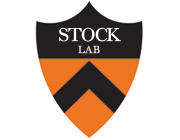Organization of the receptor-kinase signaling array that regulates Escherichia coli chemotaxis.
Publication Year
2002
Type
Journal Article
Abstract
Motor behavior in prokaryotes is regulated by a phosphorelay network involving a histidine protein kinase, CheA, whose activity is controlled by a family of Type I membrane receptors. In a typical Escherichia coli cell, several thousand receptors are organized together with CheA and an Src homology 3-like protein, CheW, into complexes that tend to be localized at the cell poles. We found that these complexes have at least 6 receptors per CheA. CheW is not required for CheA binding to receptors, but is essential for kinase activation. The kinase activity per mole of bound CheA is proportional to the total bound CheW. Similar results were obtained with the E. coli serine receptor, Tsr, and the Salmonella typhimurium aspartate receptor, Tar. In the case of Tsr, under conditions optimal for kinase activation, the ratio of subunits in complexes is approximately 6 Tsr:4 CheW:1 CheA. Our results indicate that information from numerous receptors is integrated to control the activity of a relatively small number of kinase molecules.
Keywords
Kinetics,
Protein Structure, Tertiary,
chemotaxis,
Bacterial Proteins,
signal transduction,
Escherichia coli,
Models, Biological,
Chemoreceptor Cells,
Membrane Proteins,
Protein Binding,
Time Factors,
Ligands,
Microscopy, Fluorescence,
Receptors, Cell Surface,
Escherichia coli Proteins,
Salmonella typhimurium,
Cytoplasm,
Electrophoresis, Polyacrylamide Gel,
Histidine Kinase,
Methyl-Accepting Chemotaxis Proteins,
Densitometry,
Microscopy, Immunoelectron
Journal
J Biol Chem
Volume
277
Issue
39
Pages
36748-54
Date Published
09/2002
ISSN Number
0021-9258
Alternate Journal
J. Biol. Chem.
PMID
12119289

